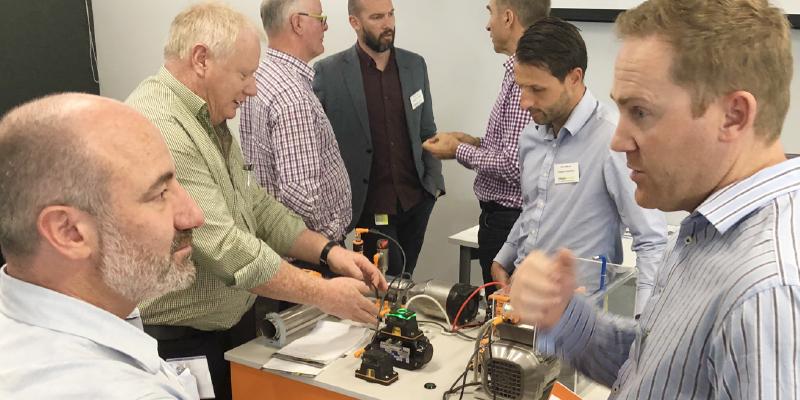It was a great turnout for Callaghan Innovation’s Industry 4.0 Breakfast Forum held in Wellington late last year.
The forum, focussing on this country’s uptake of Industry 4.0 concepts, was attended by business leaders, plant manager and designers who learned about about the current state of play in local manufacturing, in comparison to other large developed markets. They also gained valuable insights into where efficiencies and plant improvements can, and have been achieved, following implementation of this advanced technology.
A panel of speakers from local technology leaders, NZ Controls, SMC, IFM and SEW talked about the direction each company was taking moving forward, and opportunities being created through new technological developments.
In a survey that compared the number of installed industrial robots per 10,000 employees in the manufacturing industry worldwide, showed that New Zealand isn’t very automated at all coming in at just 49 robots/1000, just above India’s 3/1000 and below China’s 68/1000. And while there are many factors that also come into play, particularly educational and social aspects, even Singapore – not too far ahead of us in population, a cost of living comparable to Auckland and similar social expectations – comes in at 488/1000.
Manufacturing is a critical part of New Zealand’s economy and in 2017 accounted for 12 percent real GDP ($23 billion) and generated an estimated $36 billion in exports. But the sector has experienced low productivity growth of only 0.2 percent per annum over the last 10 years, well below the New Zealand average of 1.0 percent (which is also low by international comparison), says the MBIE. The bureau says these low levels may be partially explained by the small New Zealand market and geographic isolation, which restricts larger scale and more efficient production and the decline in manufacturing is an international trend. There is also high demand for tradespeople in the sector and some of these gaps could be automated. In fact, when new technologies are making factories increasingly more efficient - meaning either fewer employees are needed, or manufacturers can make new products that were previously uneconomic – why is New Zealand’s manufacturing industry not grasping at all the opportunities of a new world order, the technological advances called Industry 4.0?
The 4 in the title refers to the Fourth Industrial Revolution and a key component is connected machines, that can collect and assess a huge amount of date informing on and pre-empting problems in maintenance and performance, among other things. These insights allow manufacturers to optimise their operations quickly and efficiently by knowing what needs attention. Other elements are the optimisation of logistics and supply chains, autonomous equipment and vehicles, robots, additive manufacturing (3D printing), the Internet of Things (IoT) and the Cloud.
Companies who can see the potential are scrambling to embrace it and upskilling their workforce to take on these new responsibilities.



